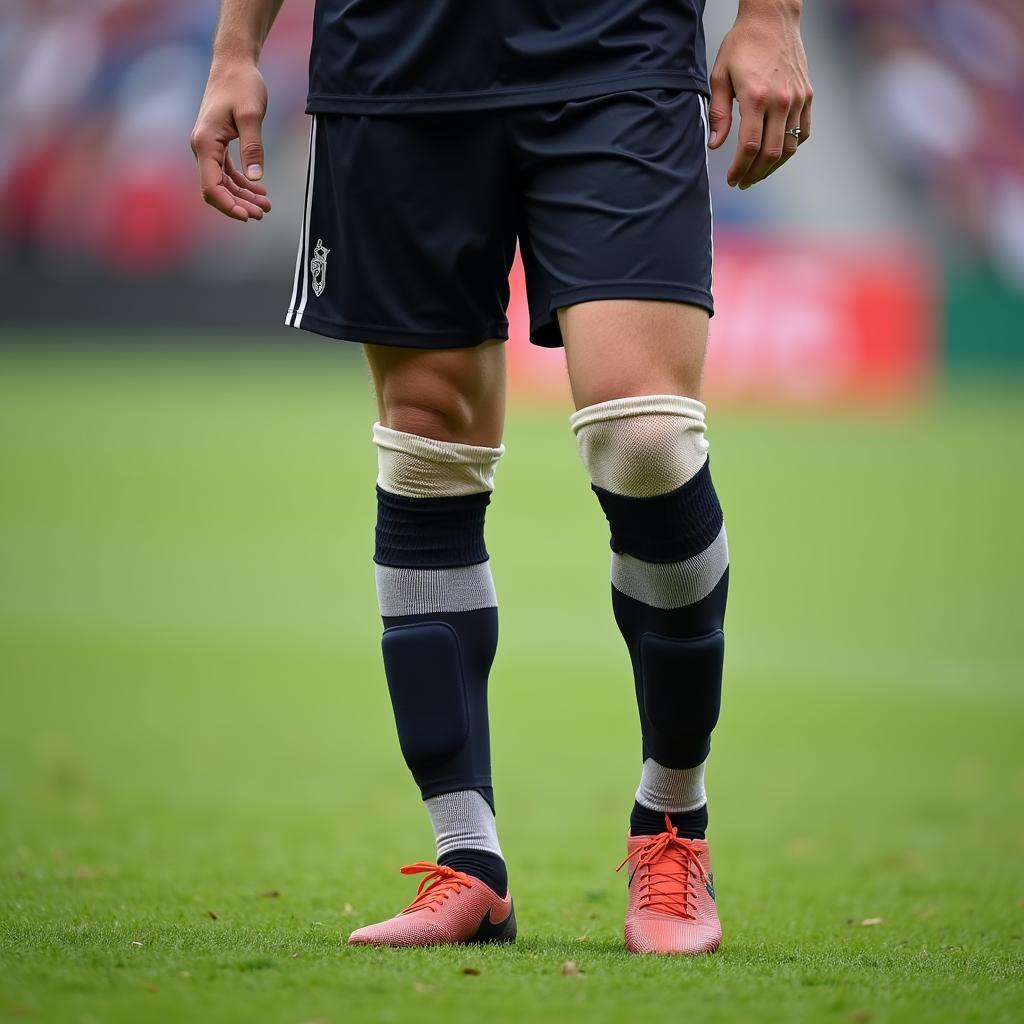Do Professional Soccer Players Wear Cups?
Professional soccer is a physically demanding sport, with players constantly jostling, colliding, and risking impact to all parts of their bodies. This naturally leads many fans to wonder about the protective gear worn, or not worn, by these athletes. One question frequently arises: Do Professional Soccer Players Wear Cups?
The short answer is no, professional soccer players generally do not wear cups. This might come as a surprise, considering the potential for injury. However, there are several reasons for this, rooted in tradition, comfort, and even perceived performance enhancement.
The Culture of Soccer and Protective Gear
Historically, soccer has been a sport where minimal protective gear is used. Unlike American football or hockey, where padding and helmets are standard, soccer players traditionally take to the field with only shin guards as mandated protection. This minimalist approach stems from the game’s origins and a focus on agility and freedom of movement.
 Soccer Player's Legs with Shin Guards
Soccer Player's Legs with Shin Guards
Comfort and Performance Considerations
Cups, while offering protection, can be perceived as bulky and restrictive by some athletes. In a fast-paced game like soccer, where agility and quick changes in direction are crucial, even the slightest hindrance in movement can impact performance.
Furthermore, some players believe that wearing a cup can affect their ball control and kicking ability. While there’s no scientific evidence to support this, the feeling of restriction can be enough to influence a player’s perception and, consequently, their performance.
The Role of Risk and Personal Choice
While professional soccer players don’t generally wear cups, it’s important to note that the risk of injury is always present. Groin injuries, while not as common as other types of soccer injuries, can and do occur.
Ultimately, the decision to wear a cup comes down to personal preference and risk tolerance. Some players, particularly those who have experienced previous injuries, might opt for the added protection despite any perceived drawbacks.
Evolving Attitudes Towards Protection
While the tradition of minimal gear in soccer remains, there’s a growing conversation about player safety and the potential benefits of additional protective measures. This includes the discussion around cups, as well as other gear like headgear to mitigate concussions.
As the understanding of sports-related injuries evolves and technology continues to develop lighter and less obtrusive protective gear, we may see a shift in attitudes and practices within professional soccer.
In conclusion, while professional soccer players don’t typically wear cups, the decision is ultimately a personal one. The debate between tradition, comfort, performance, and safety continues, and it’s likely that we’ll see further developments in this area in the future.

